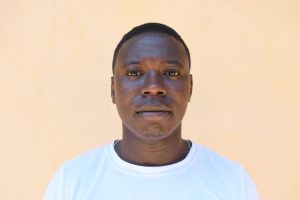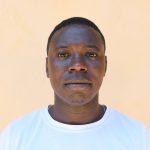The 240 people of Kalinza struggle to access sufficient water daily because their only water source is far away and requires a long, tiresome trip. Although there is a kiosk where they can collect water from a well that provides clean water, community members must walk two hours to get to the location.

But the distance is not the only problem. After community members expend so much energy getting to the well, they find long queues of people also waiting to collect water, causing them distress as they watch the day waste away. They must collect water, but the draining task leaves them with little energy or time to do anything else, interrupting even their tasks like cooking and farming.

"I feel so bad about fetching water at the water source. My school time is mostly affected as I am forced to make time for water rather than studies or even my homework," said 15-year-old Agnes.

Agnes.
Installing a dug well fed by a sand dam will enable Agnes to focus on quickly collecting sufficient, safe water to meet her needs while still having the time and energy to complete her daily tasks and attend school so she can build a brighter future.
Having the well nearby will help community members access clean drinking water near their homes.
Helping to solve the water crisis in this community will take a multi-faceted system. It requires the collaboration of the dug well and a sand dam. They will work together to create a sustainable water source that will serve this community for years to come.
Steps Toward a Solution
Our technical experts worked with the local community to identify the most effective solution to their water crisis. Together, they decided to construct a dug well and sand dam.
Dug Well Near A Sand Dam
Once a sand dam is installed and has time to mature by gathering sand and silt, groundwater increases significantly in the entire area surrounding the project. This provides a reliable source of groundwater that wasn’t possible before. As a result, wells can be constructed to take advantage of the water stored and filtered in the collected sand.
During construction, we build a platform for the well and attach a hand pump. The community gains a safe, enclosed water source capable of providing approximately five gallons of water per minute.
This dug-well will be connected to a sand dam to obtain water.
Community Education & Ownership
Hygiene and sanitation training are integral to our water projects. Training is tailored to each community's specific needs and includes key topics such as proper water handling, improved hygiene practices, disease transmission prevention, and care of the new water point. Safe water and improved hygiene habits foster a healthier future for everyone in the community. Encouraged and supported by the guidance of our team, a water user committee representative of the community's diverse members assumes responsibility for maintaining the water point, often gathering fees to ensure its upkeep.

 Protected Dug Well
Protected Dug Well
 Rehabilitation Project
Rehabilitation Project


















